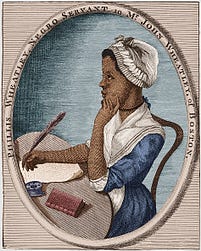|
 |
“Digging” by Seamus Heaney from Opened Ground: Selected Poems 1966-1996. © Farrar, Straus and Giroux, 1998.
ORIGINAL TEXT and AUDIO - 2017
It's the anniversary of the attack that began WWII in 1939. At 11 minutes after five in the morning, Hitler issued a proclamation for his army to invade Poland. He claimed it was a counterattack, that the Poles had started the whole thing, but in reality, German troops had been moving to the eastern border for weeks; Polish troops had simply moved up to their own border to defend it. Hitler had recently signed a pact with Soviet Premier Josef Stalin, surprising everyone, because the two men had been sworn enemies. Their intention was to carve up Poland, giving the western third to Germany while the Soviets took the rest.
Britain and France, allied with Poland, entered the war two days later. But by then it was too late to save Poland. The German army unleashed the new form of warfare they called Blitzkrieg, or "lightning war," and within six days, had taken Krakow. Within 10, they were outside Warsaw. By early October, Poland had fallen.
San Francisco's first cable car began regular service on this date in 1873. Andrew Smith Hallidie was an English ex-pat who had immigrated to San Francisco during the Gold Rush in the 1850s. On a typically damp, foggy day in 1869, he saw a team of horses struggling to pull a horse-drawn car up a steep, slippery cobblestone street. The horses were being brutally whipped, but to no avail: they lost their footing, fell, and were fatally dragged by the car as it raced down the hill. Hallidie determined to find a better way. His father was an inventor, and held a patent in England for "wire rope" cable. The younger Hallidie was already using the wire rope in the construction of suspension bridges and mine conveyance systems; he figured there must be a way to couple a steam engine and a cable to get a car up San Francisco's famous hills. He signed a contract to form the Clay Street Hill Railroad, and construction began in May 1873. Three months later, the cable car was operational. Hallidie made his first successful test run from the top of Nob Hill at four a.m. on August 2. The cable car began public service on the first day of September, and it made Hallidie a rich man.
It was on this day in 1773 that 20-year-old Phillis Wheatley published Poems on Various Subjects, Religious and Moral. It was the first book of poetry published by an African-American. Wheatley was born in West Africa and brought over as a slave when she was a young girl. She was purchased by a Boston family, who taught her to read and write, and eventually gave her her freedom. She went to London when her book was published, and she met many important people there, including the Lord Mayor, who gave her a copy of Paradise Lost. George Washington praised her talents, and she published numerous poems in magazines. But her husband fell into debt and then abandoned her when she was pregnant, and she died in childbirth, in a boarding house, when she was only 31 years old.
Be well, do good work, and keep in touch.®
STATE FAIR SPECIAL $15 price only till Labor Day
CHEERFULNESS by Garrison Keillor - CLICK HERE
You’re a free subscriber to The Writer's Almanac with Garrison Keillor. Your financial support is used to maintain these newsletters, websites, and archive. Support can be made through our garrisonkeillor.com store, by check to Prairie Home Productions P.O. Box 2090, Minneapolis, MN 55402, or by clicking the SUBSCRIBE button. This financial support is not tax deductible.


